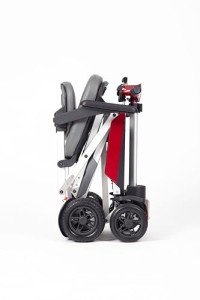Understanding Mobility Aids: Enhancing Independence and Quality of Life
As society continues to age and people progressively look for ways to preserve independence, the need for mobility aids has actually never been more pertinent. Mobility aids, which include a variety of devices developed to assist individuals with walking or walking around, play an important function in promoting mobility, boosting safety, and enhancing overall quality of life. This article will check out the different kinds of mobility aids, their advantages, considerations for selection, and address some regularly asked questions.
Kinds Of Mobility Aids
Numerous mobility aids are offered, each created to resolve particular needs. source for this article following table summarizes some of the most typical kinds of mobility aids and their functions.
| Type of Mobility Aid | Description | Best Suited For | Key Features |
|---|---|---|---|
| Walking canes | A portable stick offering support and balance. | People who require very little assistance. | Light-weight, portable, adjustable height. |
| Walkers | Four-legged frames offering stability. | Those requiring significant support while walking. | Foldable, some with wheels, added safety features. |
| Rollators | Wheeled walkers with a seat for resting. | People needing mobility with the alternative to rest. | Brakes, baskets for individual products, adjustable height. |
| Wheelchairs | Chairs with wheels for individuals with restricted mobility. | Those unable to stroll or requiring comprehensive assistance. | Manual or powered alternatives, adjustable seating. |
| Scooters | Motorized devices for larger distances. | Individuals with minimal stamina however needing self-reliance. | Different sizes and styles, often portable. |
| Crutches | Support devices positioned under the arms or lower arms. | Individuals recuperating from lower limb injuries. | Adjustable, lightweight, needs upper body strength. |
| Stairlifts | Mechanical devices for moving in between floorings. | Users facing challenges in multi-level homes. | Customizable for different staircases, automated. |
Advantages of Mobility Aids
Mobility aids offer a variety of benefits that can considerably boost the lives of people facing mobility obstacles. Some significant advantages include:
- Increased Independence: Mobility aids empower people to move easily without relying on others for support, consequently enhancing their self-confidence and self-confidence.
- Boosted Safety: Using mobility aids can reduce the danger of falls and injuries, particularly for older adults or those with balance problems.
- Enhanced Quality of Life: By helping with mobility, people can take part in social activities, participate in occasions, and enjoy life more totally, contributing to much better psychological and psychological health.
- Rehabilitation Support: After surgical treatment or injury, mobility aids supply necessary assistance and stability, helping in recovery and rehab processes.
- Availability: Many mobility aids are developed to be used both indoors and outdoors, guaranteeing that individuals can navigate various environments with ease.
Aspects to Consider When Choosing Mobility Aids
Picking the appropriate mobility help requires cautious consideration of numerous elements, including:
| Factor | Factors to consider |
|---|---|
| User's Needs | Examine the level of mobility needed; think about whether the user needs short-term or long-term assistance. |
| Physical Limitations | Examine the user's strength, balance, and coordination to determine the very best type of help. |
| Setting | Consider the main environments where the aid will be utilized, such as home, outdoors, or particular surfaces. |
| Weight and Portability | Guarantee that the picked device is manageable concerning mobility and storage, particularly for outdoor use. |
| Budget plan | Mobility aids been available in a series of prices; think about insurance protection and available funding options. |
| Adjustability | Select aids that can be adjusted for height and convenience to accommodate growth or altering requirements. |
Often Asked Questions About Mobility Aids
1. How do I understand if I need a mobility aid?
Numerous aspects can signify the requirement for a mobility help, such as problem strolling or stabilizing, fatigue while standing, or a recent surgical treatment impacting mobility. Consulting with a health care professional can supply guidance customized to specific needs.
2. What types of mobility aids are covered by insurance?
Coverage differs in between insurance companies, however the majority of supply options for resilient medical devices, which typically consists of wheelchairs, walkers, and some types of walking canes. Contact your insurance supplier for specific protection details.
3. Can mobility aids be used outdoors?
Yes, numerous modern mobility aids are developed for outdoor usage. Rollators, scooters, and some walkers are geared up with features for stability and ease of usage on different terrain.
4. How do I preserve my mobility help?
Regular upkeep includes looking for any wear and tear, ensuring that parts such as wheels, brakes, and frames are working properly, and cleaning the devices as required. Following the manufacturer's guidelines is crucial for security.
5. Is there a threat of ending up being dependent on mobility aids?
While some users might end up being reliant on mobility aids, they are developed to promote independence and mobility. Gradually utilizing a mobility help can enhance confidence and aid keep physical strength and coordination.
Mobility aids are vital tools that empower individuals to get rid of physical challenges, promoting independence and boosting lifestyle. By comprehending the numerous kinds of mobility aids offered, their advantages, and important aspects for factor to consider, families and caretakers can make informed decisions that best fulfill the needs of their enjoyed ones. With the ideal support, those with mobility challenges can lead satisfying and active lives, complimentary to check out the world around them.

